Exploring the Essence of the 108 Upanishads: A Journey Through Ancient Wisdom
The 108 Upanishads represent a treasure trove of spiritual and philosophical insights from ancient India, offering profound wisdom on existence, self-realization, and the nature of the universe. This blog delves deep into their history, significance, and the transformative teachings that continue to resonate today.
Table of Contents
- Introduction to Human Intelligence and Buddhi
- Kaa Upanishad: The Source of Existence
- Kata Upanishad: Conquering Fear of Death
- Prasna Upanishad: The Six Profound Questions
- Mundaka Upanishad: Higher vs. Lower Knowledge
- Mandukya Upanishad: States of Consciousness
- Tiria Upanishad: The Layers of Human Existence
- Isha Upanishad: Creation and Connection to the Cosmos
- Chandogya Upanishad: Unity of the Individual and the Universe
- Brihadaranyaka Upanishad: The Great Forest of Knowledge
- Common Themes Across the Upanishads
- The Simplistic Propagation of Knowledge
- Symbolic Representations in the Upanishads
- The Essence of the Upanishads: A Conclusion
- Frequently Asked Questions
Introduction to Human Intelligence and Buddhi
Human intelligence, often referred to as Buddhi, is a multifaceted concept that encompasses logic, reasoning, and the capacity for critical thinking. This intelligence is not only about processing information but also about understanding complex relationships within our environment. It stands as a testament to humanity’s survival and adaptability throughout history.
Buddhi serves as the foundation upon which we build our knowledge and insights. It allows us to navigate life’s challenges and make informed decisions. However, Buddhi is just one aspect of our cognitive abilities. There exists a realm of intelligence that transcends mere reasoning, leading us to explore deeper truths about existence.
The Power Beyond Human Intelligence
Beyond Buddhi lies a profound capability—an intuition that can lead to groundbreaking insights. This power is often manifested in moments of creativity, scientific breakthroughs, and profound realizations that cannot be fully explained through logic alone.
Consider the examples of mathematicians and scientists who have made extraordinary contributions to their fields. Their work often stems from a place of deep devotion and commitment, allowing them to tap into an intuitive understanding that surpasses conventional intelligence.

Recognizing Hidden Capabilities
Many of us possess hidden capabilities that we may not fully recognize. A simple thought experiment can illustrate this point. Imagine listening to a piece of music without any formal training. You may not know the names of the notes, but you can still identify when a note is out of tune.
This ability stems from our brain’s natural inclination to recognize patterns. When we hear music, our brain forms expectations based on familiar structures. An out-of-tune note disrupts this pattern, alerting us to its inconsistency.

Understanding Cause and Effect
The universe operates on a complex web of cause and effect. Human intelligence, while powerful, is only part of the equation in understanding these relationships. Deep introspection, observation, and critical thinking are essential in tracing effects back to their causes.
Moreover, practices such as meditation can enhance our capacity for concentration, allowing us to delve deeper into the cause-and-effect dynamics of existence. By cultivating these skills, we can gain insights that extend beyond what is typically accessible through logical reasoning alone.
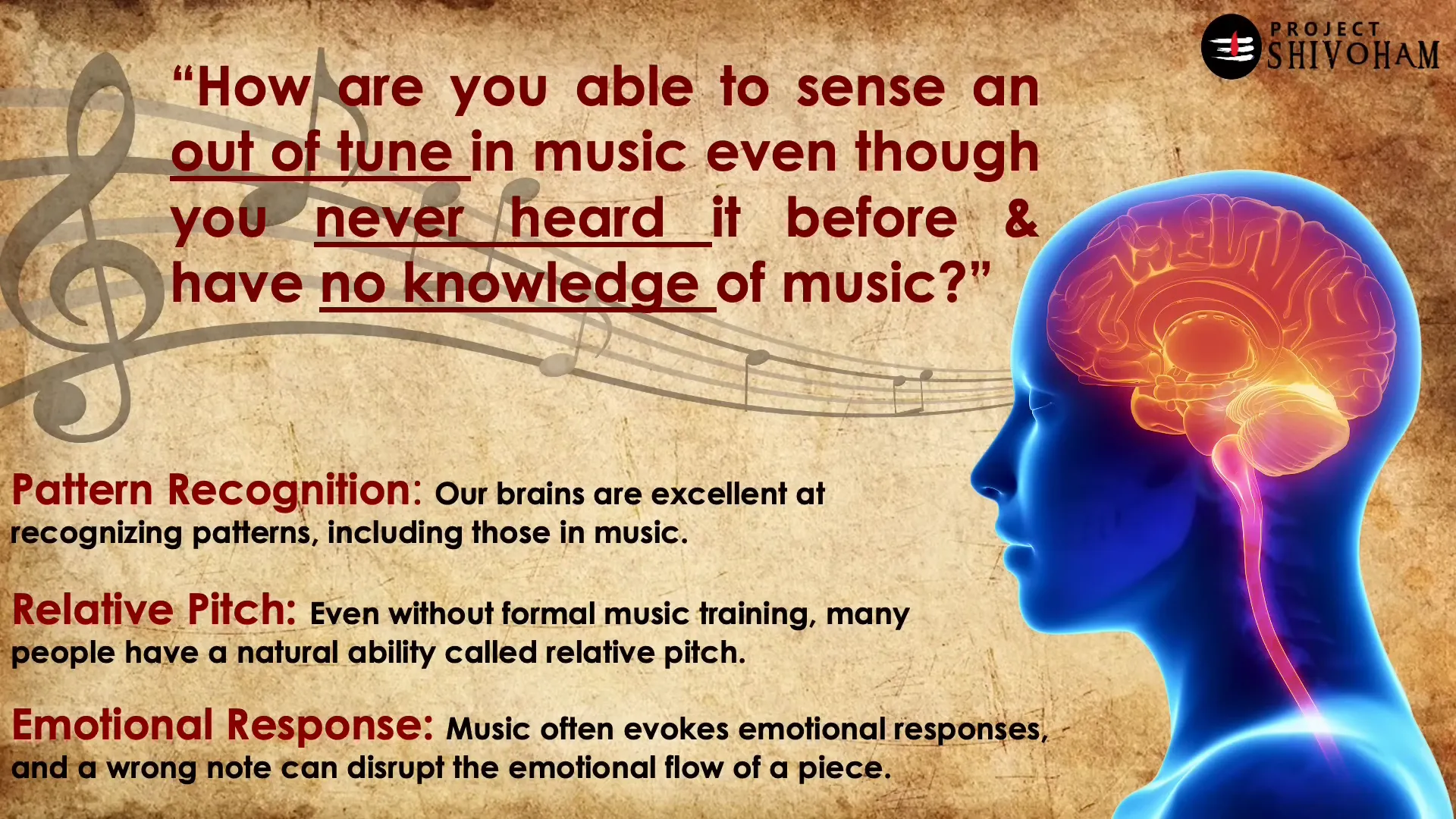
The Upanishads: An Overview
The Upanishads are ancient texts that encapsulate the wisdom of early Indian sages. They are chronicles of profound experiences and observations about the nature of the universe and consciousness. Understanding the Upanishads requires a mindset attuned to exploring the intricate relationships of cause and effect.
These texts emphasize the importance of inner exploration and the quest for knowledge. They are not merely philosophical treatises; they are reflections of the sages’ deep understanding of existence and the cosmos.
Points of Clarification on Upanishads
It’s essential to clarify a few points regarding the Upanishads. Firstly, they are not tied to any specific spiritual organization or guru. They represent a universal quest for knowledge, accessible to anyone with the right intentions to learn.
Secondly, there is a common misconception that the Vedas and Upanishads were never written down. In reality, they were recorded over time by ancient sages, reflecting their insights into the nature of reality.
Classification of the Upanishads
The Upanishads can be broadly classified into five categories based on their focus:
- Yoga: These texts emphasize the principles and practices of yoga.
- Vanta: This category delves into philosophical concepts.
- Mantra: These texts focus on the significance of sacred sounds and chants.
- Sasa: This group explores aspects of life and ethics.
- Sharir: These texts address physiological concepts.
Isha Upanishad: The Lord and Supreme Reality
The Isha Upanishad is one of the most significant texts among the Upanishads. Its name translates to “The Lord” or “The Ruler,” referring to the supreme reality that underlies all existence. This text discusses the omnipresence of Brahman and emphasizes the importance of living a balanced life.
It advocates renunciation of both pleasure and pain, encouraging readers to understand the nature of the soul and its unity with the universe. The Isha Upanishad inspires individuals to recognize their true essence and live with purpose, ethical integrity, and a sense of selflessness.
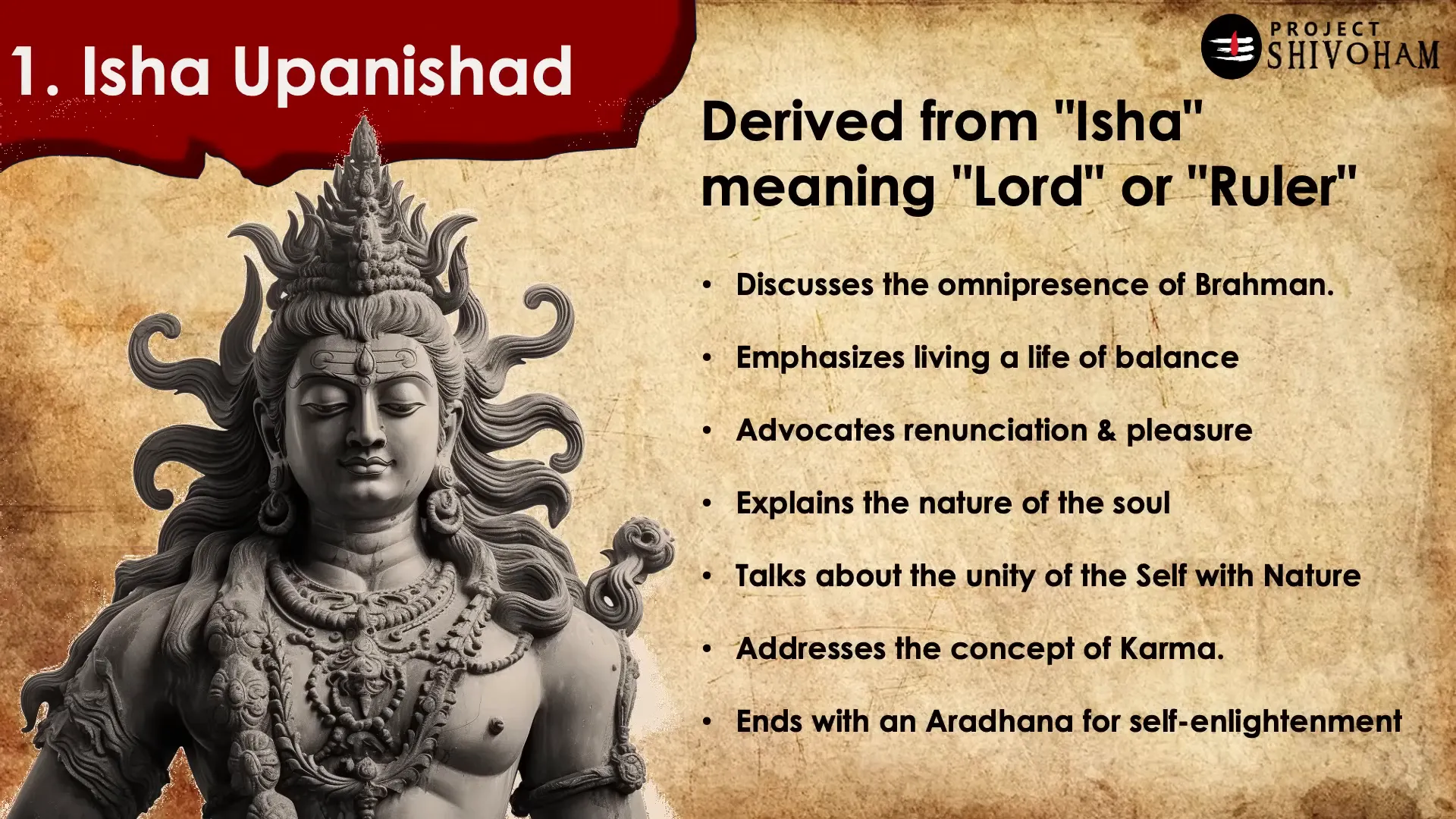
Kaa Upanishad: The Source of Existence
The Kaa Upanishad poses profound questions about the nature of existence. It asks, “By whom is this nature and cosmos shaped?” This inquiry leads to deeper reflections on the source of all thoughts and actions.
At its core, the Kaa Upanishad urges individuals to explore the ultimate reality, which is Brahman. It emphasizes that true wisdom comes not just from learning but from experiencing this divine force. By seeking the source, one can understand their intrinsic power and connection to the infinite cosmos.
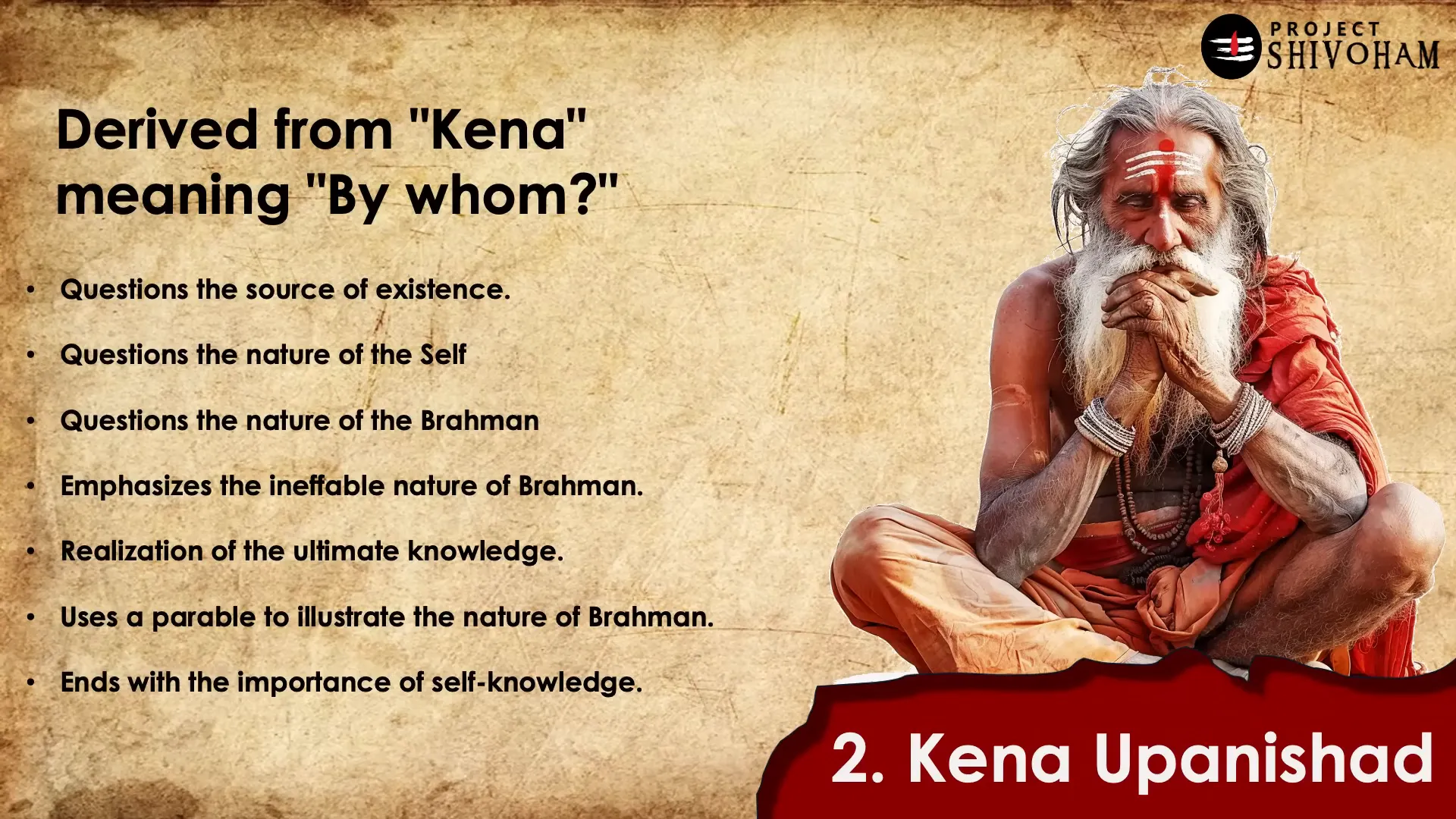
Kata Upanishad: Conquering Fear of Death
The Kata Upanishad centers around a dialogue between Nachiketa, a young boy, and Yama, the god of death. This conversation delves into the nature of death and the eternal soul, emphasizing that understanding the Atman can lead to conquering the fear of death.
Through this text, readers are encouraged to seek inner truths that transcend the mortal experience. The Kata Upanishad teaches that by realizing the unity of the Atman with Brahman, one can achieve true enlightenment and immortality.
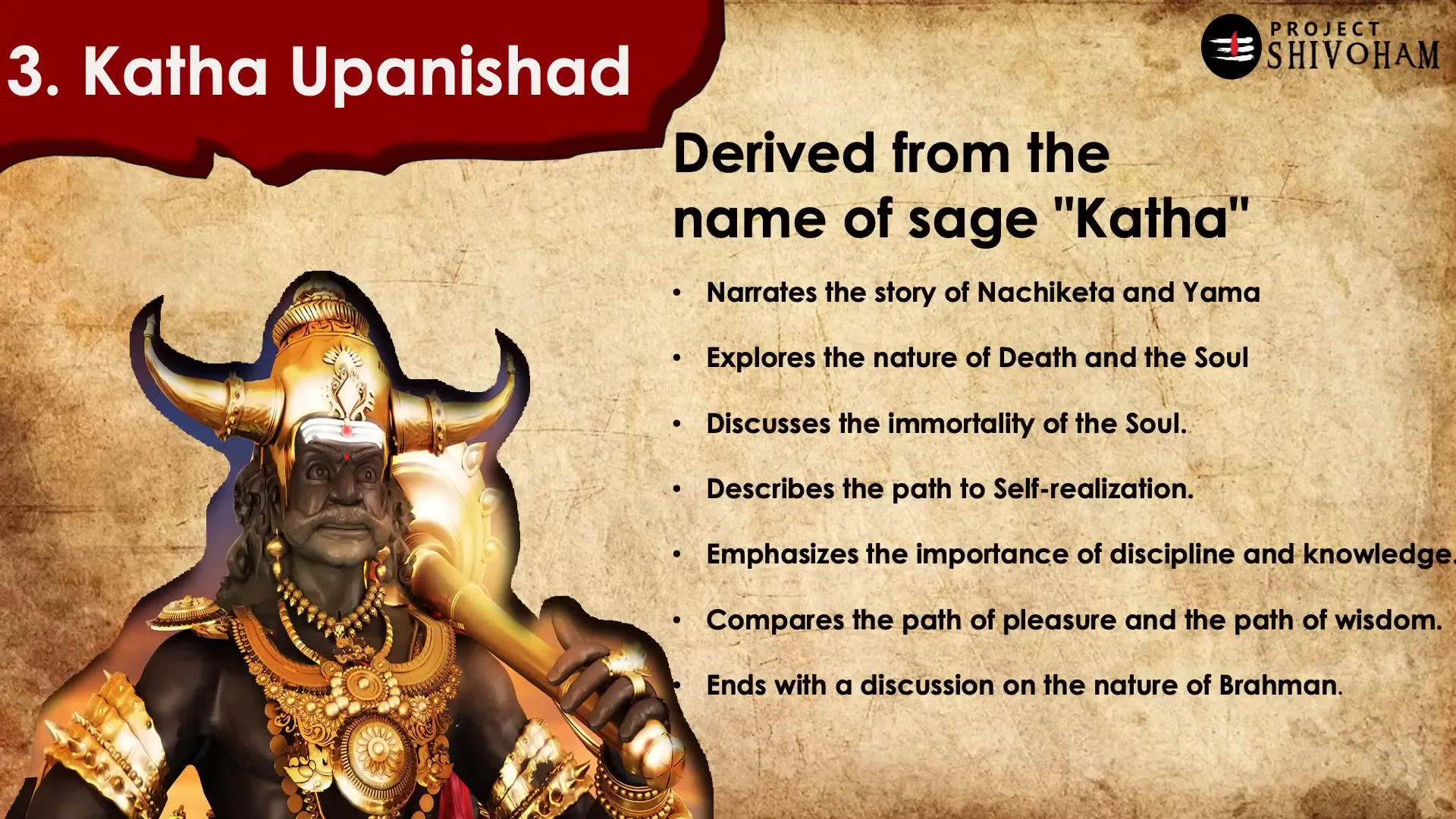
Prasna Upanishad: The Six Profound Questions
The Prasna Upanishad poses six profound questions from six seekers to the sage Pippalada. These inquiries cover the origins of the universe, the elements sustaining life, and the nature of the vital forces.
Each question is a pathway to understanding the connection between the microcosm and macrocosm. By exploring these themes, the Prasna Upanishad guides individuals toward ultimate knowledge and self-realization.
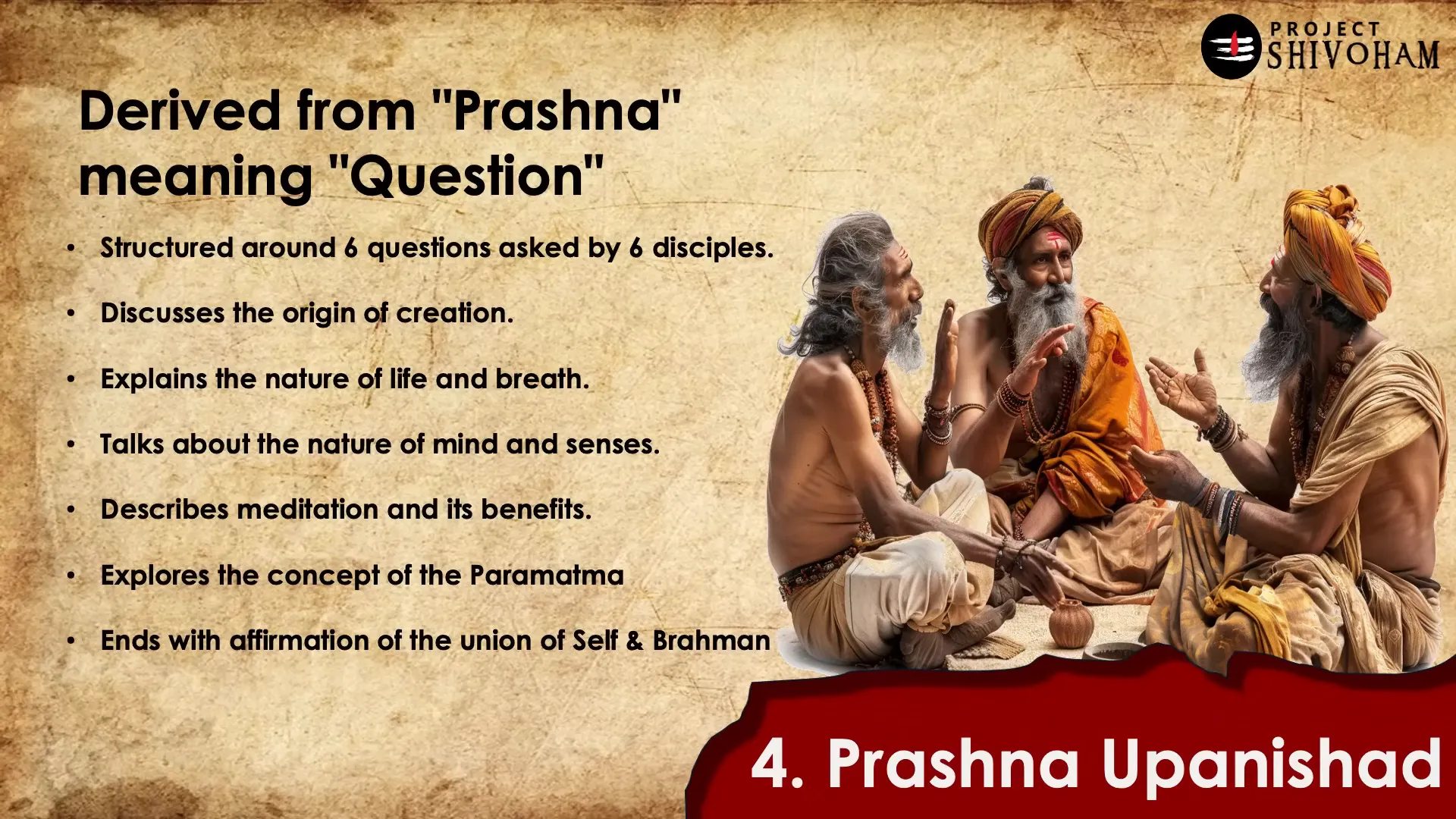
Mundaka Upanishad: Higher vs. Lower Knowledge
The Mundaka Upanishad distinguishes between two types of knowledge: higher (para) and lower (apara). Using the metaphor of two birds on a tree, it illustrates the relationship between the individual soul and the Supreme Soul.
This Upanishad guides practitioners on the path to enlightenment, emphasizing that true wisdom arises from understanding the Supreme reality, Brahman. It encourages a balance between worldly responsibilities and the pursuit of higher knowledge.
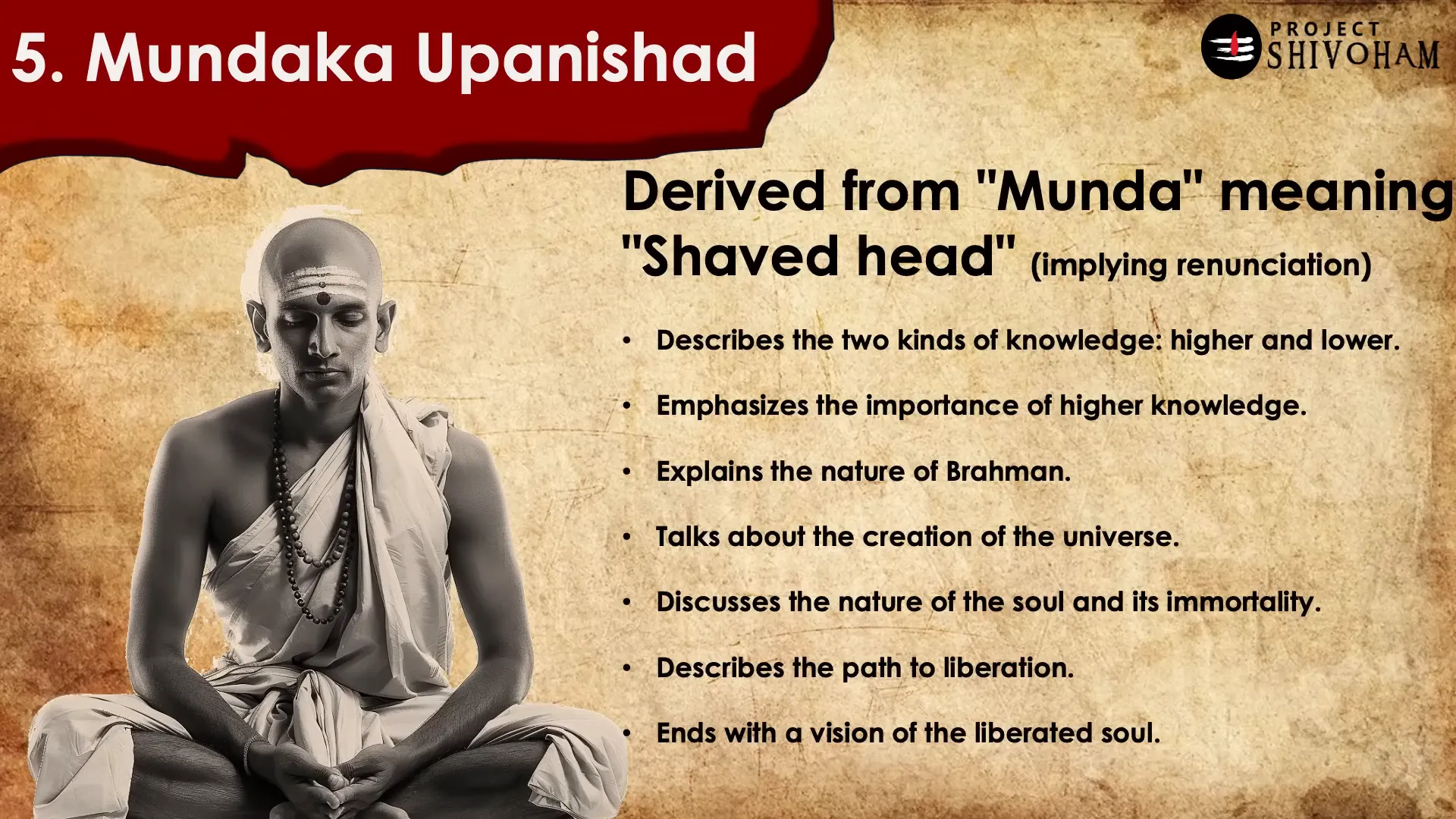
Mandukya Upanishad: States of Consciousness
The Mandukya Upanishad is the shortest among the Upanishads, containing just twelve verses. It explores four states of consciousness: waking, dreaming, deep sleep, and the transcendent state known as Turiya.
This text encapsulates the essence of ultimate reality through the syllable “Om,” emphasizing the importance of understanding these states for spiritual growth. The Turiya state, in particular, represents a profound level of consciousness that integrates the essence of existence.
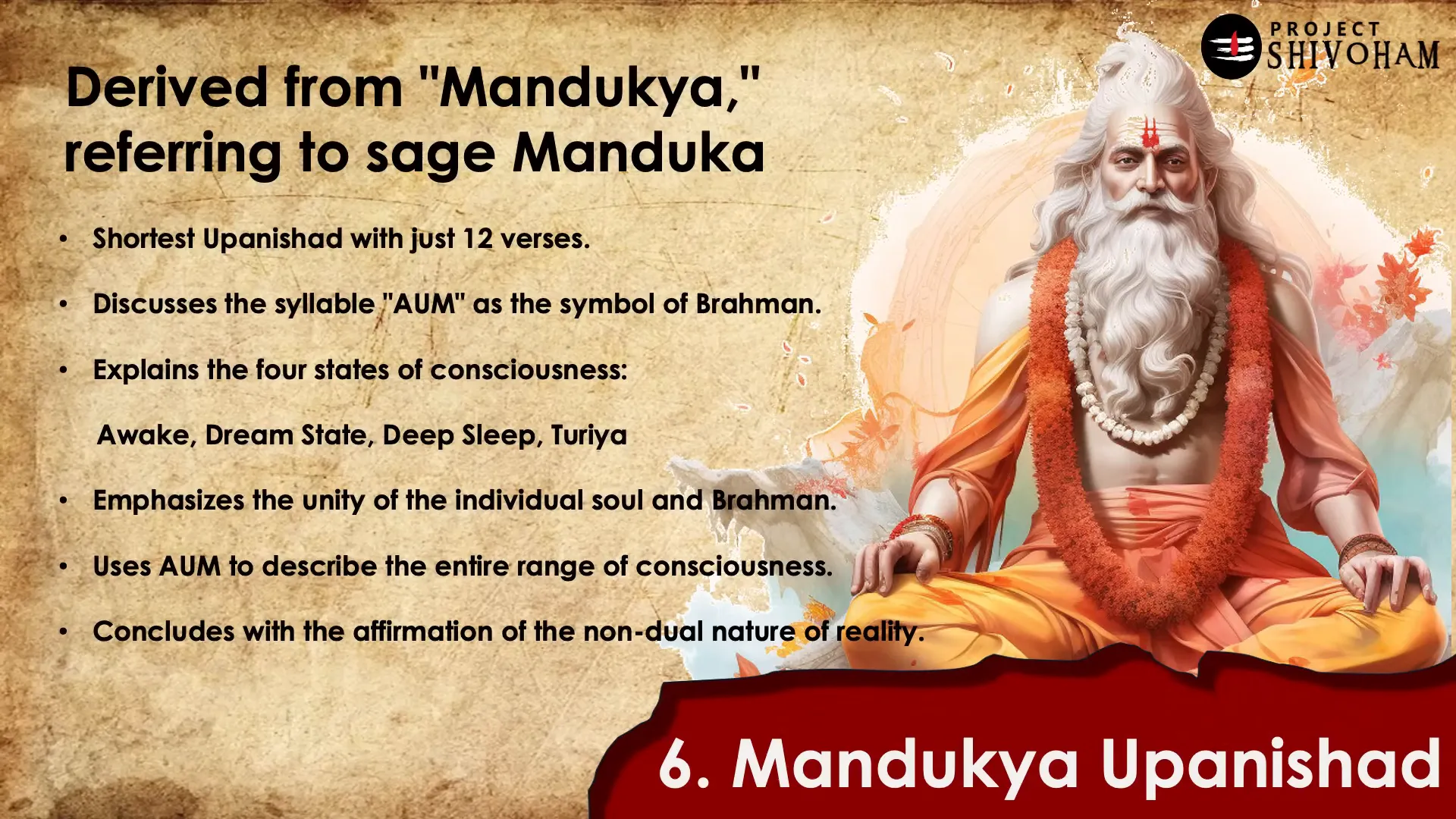
Tiria Upanishad: The Layers of Human Existence
The Tiria Upanishad presents a detailed examination of human existence through its division into five layers, or koshas. These layers include the physical body (Anamaya Kosha), the energy body, the mind, the intellect, and the bliss body.
Each layer represents a different aspect of the human experience, emphasizing the interconnectedness of body, mind, and spirit. This Upanishad highlights the importance of nourishing the physical layer while also recognizing the subtler dimensions of existence.
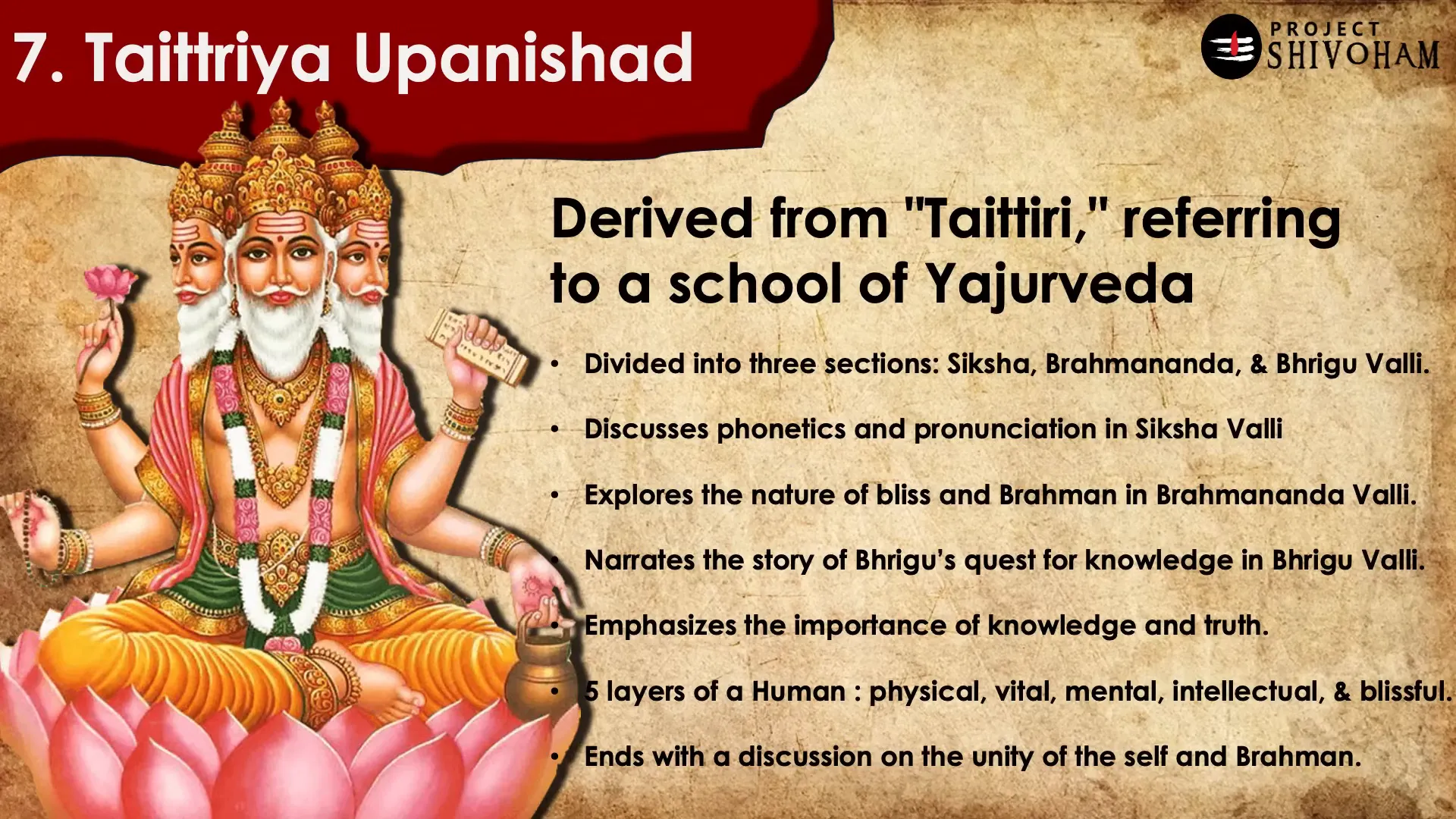
Isha Upanishad: Creation and Connection to the Cosmos
The Isha Upanishad explores the theme of creation and the relationship between the individual soul (Atman) and the universe. It emphasizes that everything in existence is interconnected, reflecting the unity of all beings.
This text serves as a profound reminder of the eternal nature of the soul and its connection to the cosmos. By understanding this relationship, individuals can attain self-realization and liberation.
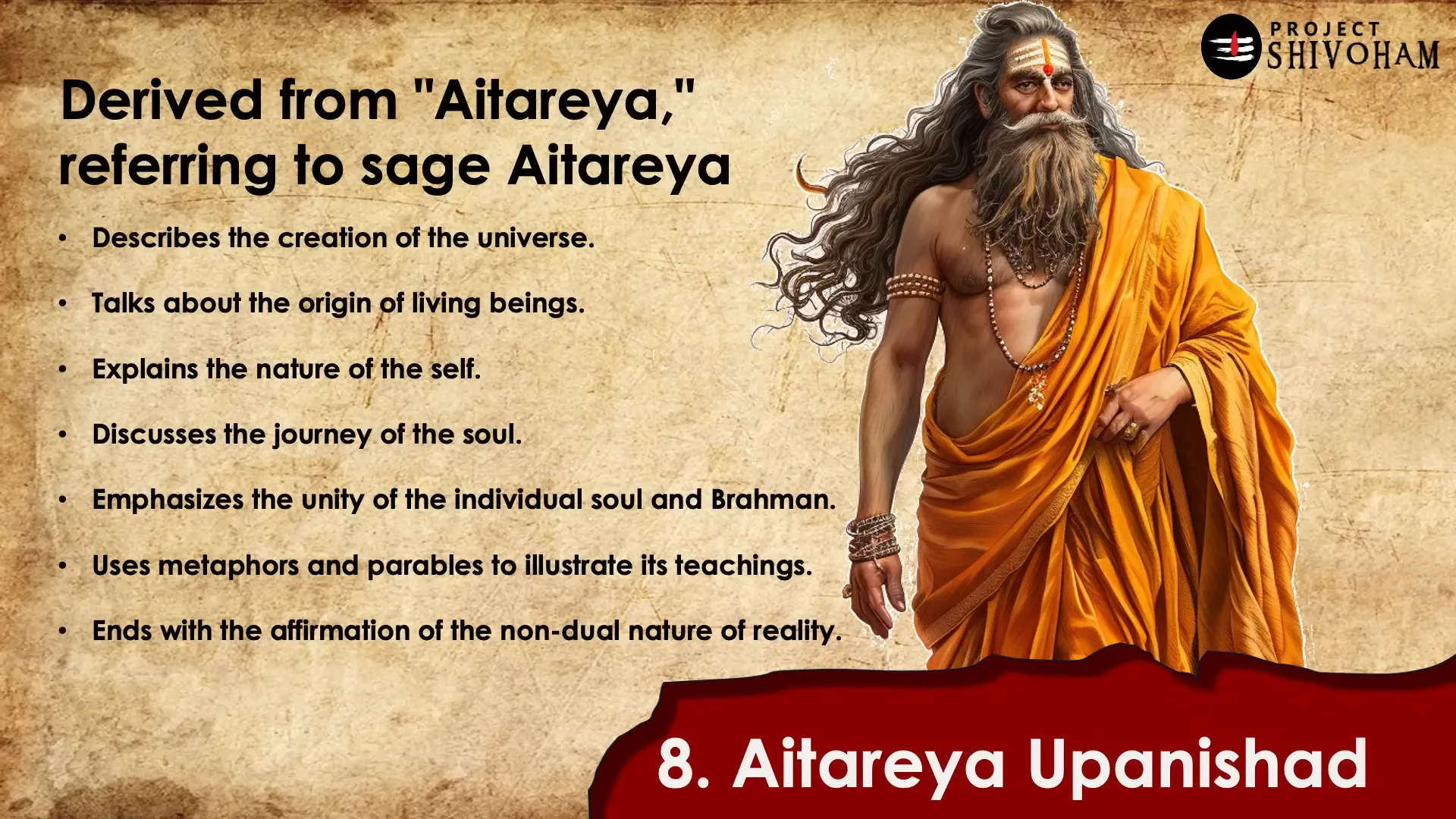
Chandogya Upanishad: Unity of the Individual and the Universe
The Chandogya Upanishad delves into the nature of reality, presenting the concept of “Tat Tvam Asi,” or “Thou art That.” This phrase encapsulates the unity between the individual soul and the ultimate reality.
It explores the process of creation and how the universe emerged from the formless absolute. Through meditation and the significance of “Om,” practitioners can realize their oneness with the universe, uncovering their divine essence.
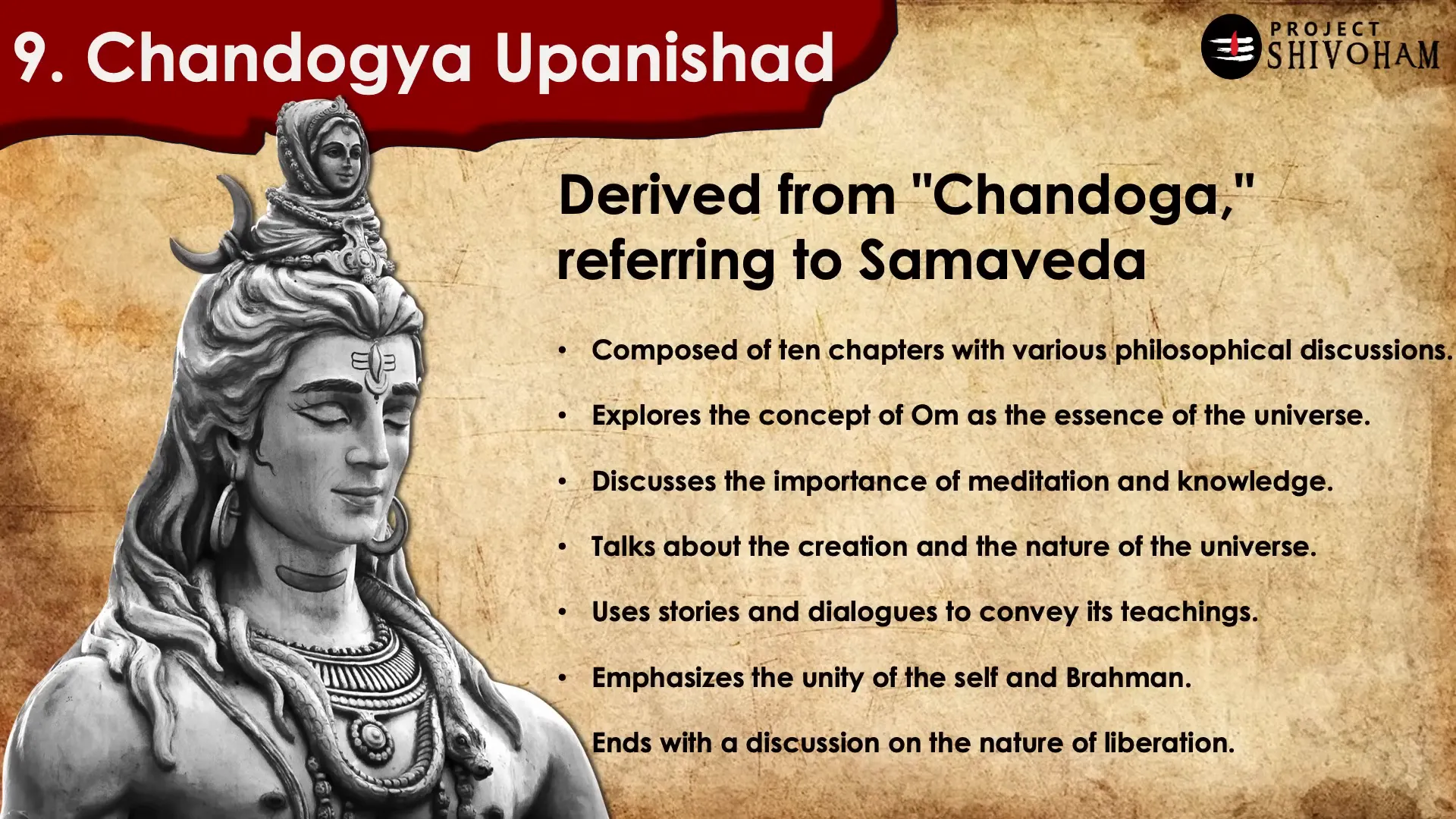
Brihadaranyaka Upanishad: The Great Forest of Knowledge
The Brihadaranyaka Upanishad, often referred to as the “Great Forest Upanishad,” is a monumental text in the Upanishadic tradition. Its name signifies the vast and profound teachings encapsulated within, akin to the expansive nature of a forest that nurtures diverse forms of life. This Upanishad is remarkable not only for its length but also for its depth, exploring intricate philosophical concepts through dialogues and narratives.
At the heart of the Brihadaranyaka Upanishad lies the exploration of the self and its relationship with the universe. It delves into the nature of Brahman, the ultimate reality, and emphasizes the importance of knowledge and self-realization. Through its teachings, this Upanishad serves as a guiding light for seekers on their spiritual journey.

Common Themes Across the Upanishads
The Upanishads, as a collective corpus, share several overarching themes that resonate throughout their teachings. One of the most prominent themes is the exploration of Brahman, the ultimate reality that underlies all existence. This concept is intricately linked to the understanding of Atman, the individual soul, which is seen as a reflection of Brahman itself.
Another recurring theme is the concept of Maya, or illusion, which highlights the transient nature of the material world. The Upanishads urge individuals to transcend this illusion and seek liberation (Moksha) through knowledge (Jnana) and meditation (Dhyana). Additionally, the principles of Dharma (righteousness) and Karma (action) are emphasized, guiding individuals in their ethical conduct and spiritual practice.
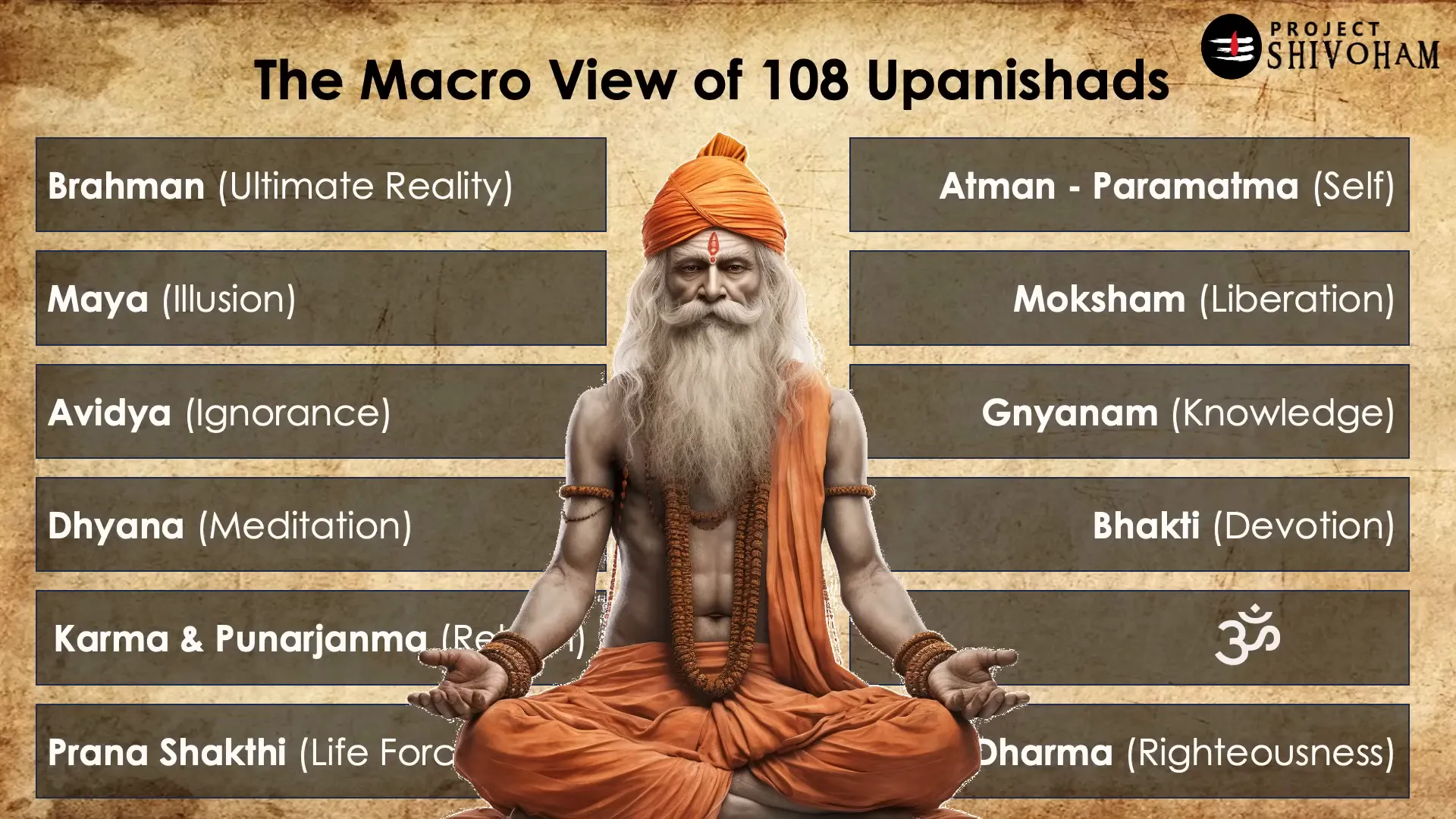
The Simplistic Propagation of Knowledge
The Upanishads utilize various symbols and metaphors to convey complex philosophical ideas in a manner that is accessible to all. This approach ensures that the teachings resonate with individuals from diverse backgrounds and levels of understanding. For instance, the wheel (chakra) symbolizes the cycle of birth, life, death, and rebirth, encapsulating profound truths about existence in a single, relatable image.
Similarly, the chariot metaphor illustrates the relationship between the body, senses, and mind, emphasizing the importance of self-control and awareness. By employing these familiar symbols, the Upanishads effectively communicate deep spiritual insights that encourage reflection and introspection.
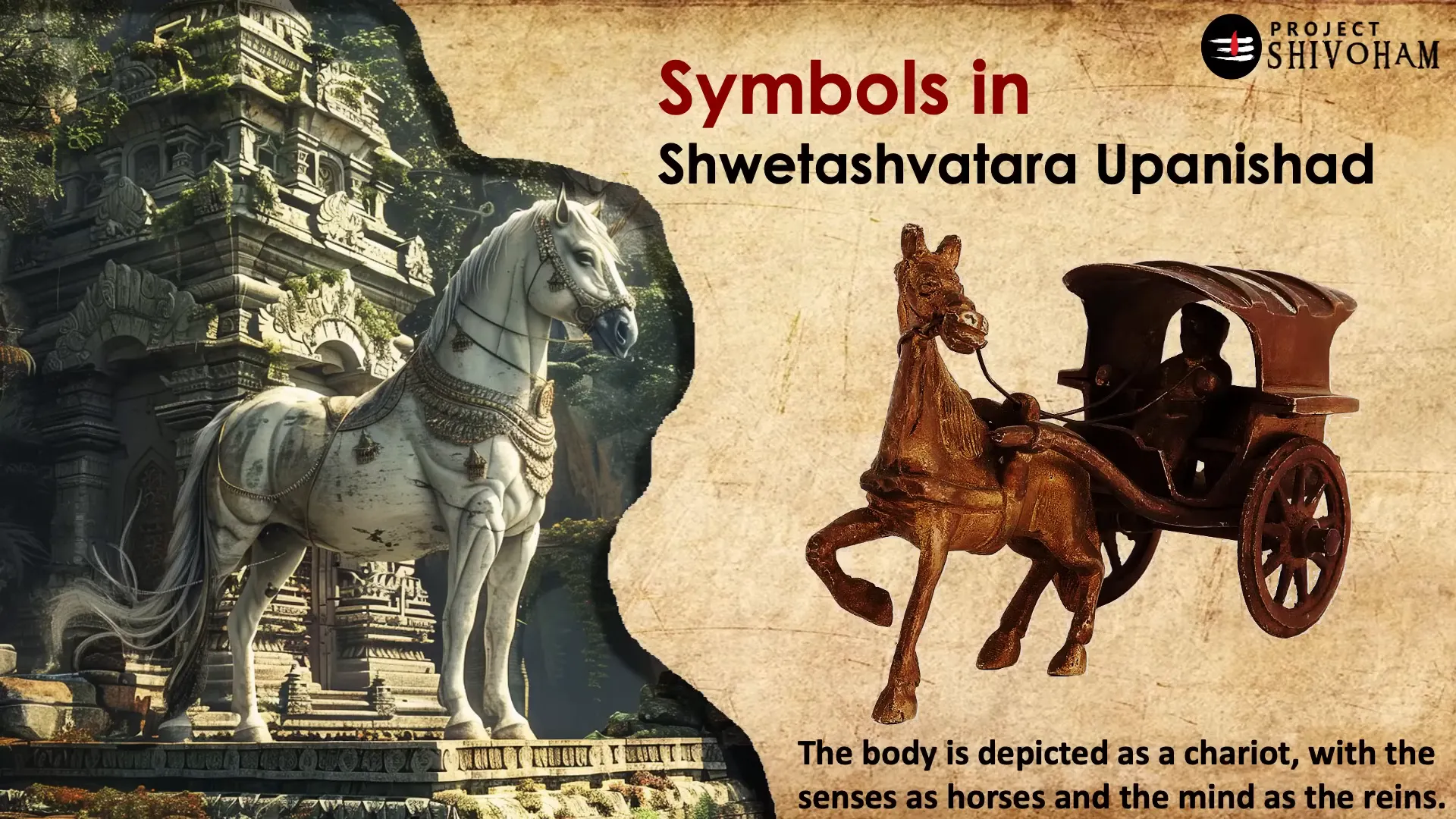
Symbolic Representations in the Upanishads
Throughout the Upanishads, symbolic representations play a crucial role in imparting wisdom. For example, the inverted tree symbolizes the relationship between the eternal Brahman and the transient universe. The roots represent the unchanging source, while the branches signify the ever-changing material world. This imagery serves as a powerful reminder of the connection between the individual and the cosmos.
Another poignant symbol is the lotus flower, which represents the soul’s journey through the material realm while remaining untouched by its challenges. These symbols not only enrich the teachings but also invite individuals to contemplate their meanings and apply them to their own lives.
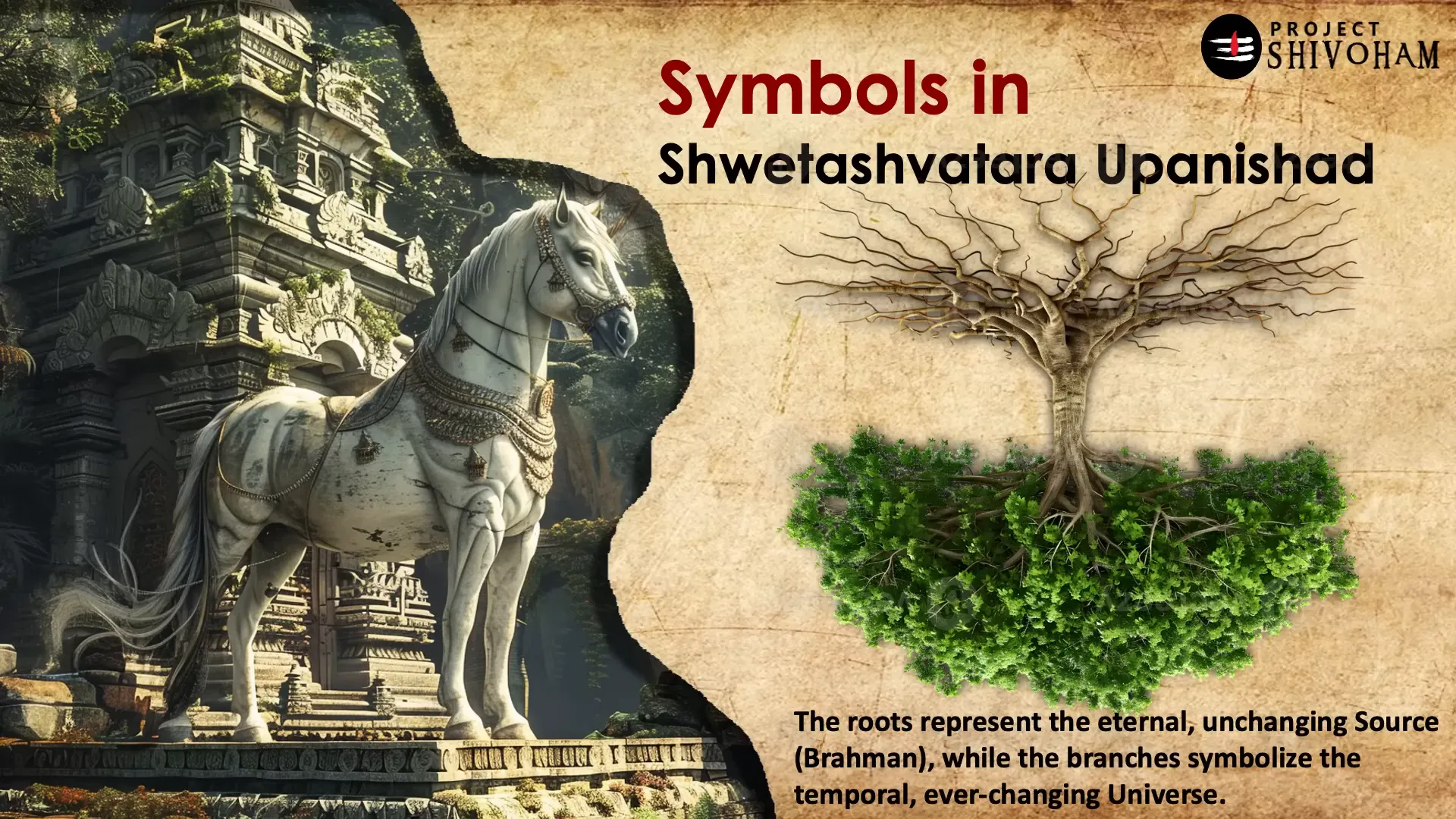
The Essence of the Upanishads: A Conclusion
In conclusion, the essence of the Upanishads lies in their profound exploration of the self, the ultimate reality, and the interconnectedness of all existence. They serve as timeless guides that encourage seekers to embark on a journey of self-discovery and enlightenment. The teachings of the Upanishads transcend cultural and temporal boundaries, offering wisdom that is relevant to all of humanity.
As we delve into these ancient texts, we uncover layers of meaning that inspire us to ponder our place in the universe and the nature of our existence. The Upanishads invite us to cultivate knowledge, practice meditation, and live in accordance with Dharma, ultimately leading us toward liberation and unity with Brahman.
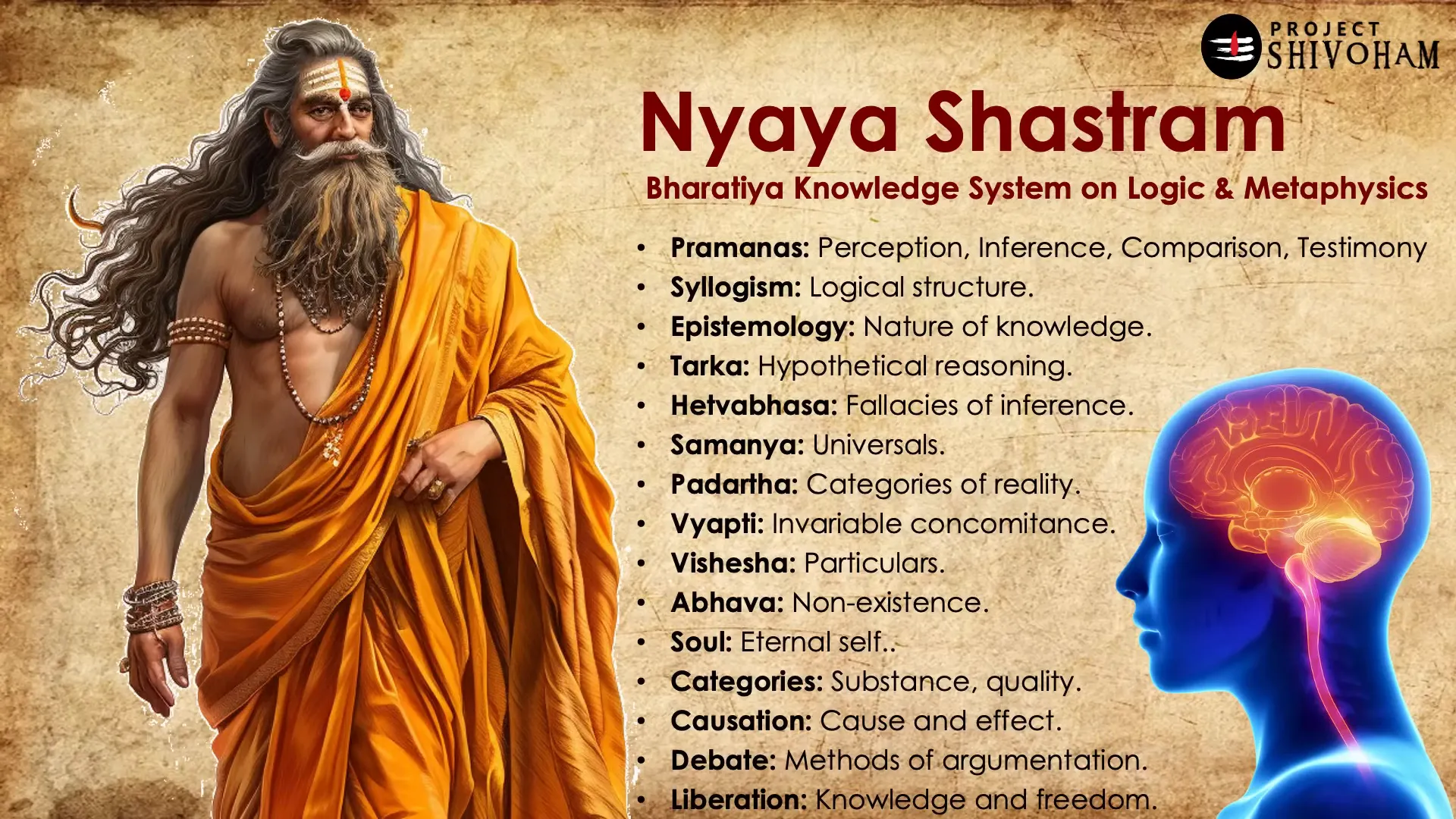
Frequently Asked Questions
What is the significance of the Upanishads?
The Upanishads are significant as they form the philosophical foundation of Hinduism, exploring essential questions about existence, the nature of reality, and the self. They offer insights that have shaped spiritual thought for centuries.
How do the Upanishads differ from the Vedas?
While the Vedas are primarily concerned with rituals and hymns, the Upanishads focus on philosophical inquiry and spiritual knowledge. They delve deeper into the meanings behind the rituals and the nature of existence.
Can anyone study the Upanishads?
Yes, the Upanishads are meant for everyone, regardless of their background or beliefs. Their teachings are universal and accessible to all who seek knowledge and understanding.
What role do symbols play in the Upanishads?
Symbols in the Upanishads simplify complex philosophical concepts, making them relatable and easier to understand. They serve as tools for contemplation and reflection, encouraging deeper insights into the nature of reality.
How can one apply the teachings of the Upanishads in daily life?
One can apply the teachings of the Upanishads by engaging in self-reflection, meditation, and ethical living according to the principles of Dharma. Embracing these practices fosters greater awareness and connection to the self and the universe.
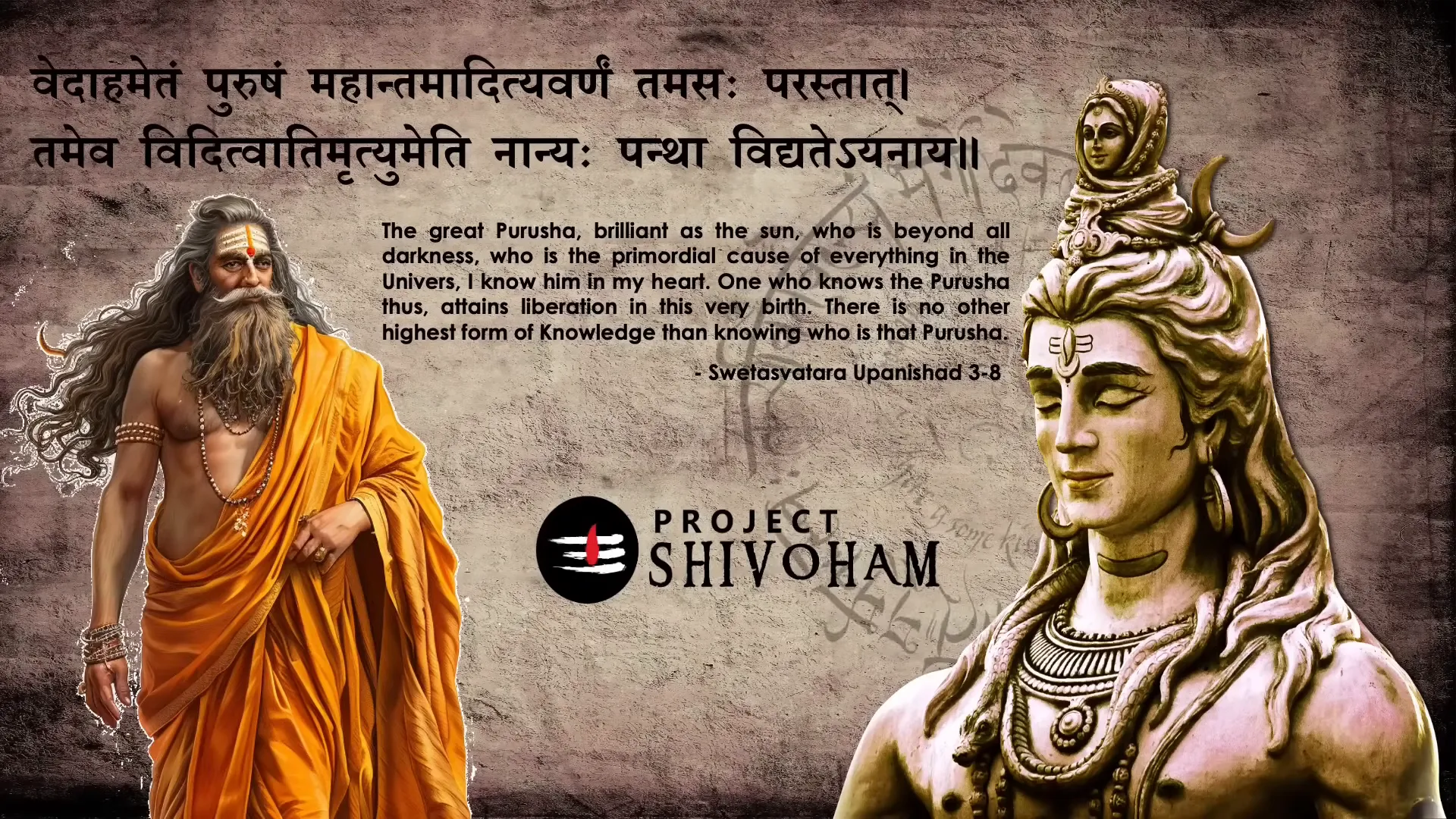
Courtesy: Aravind Markandeya, Project Shivoham